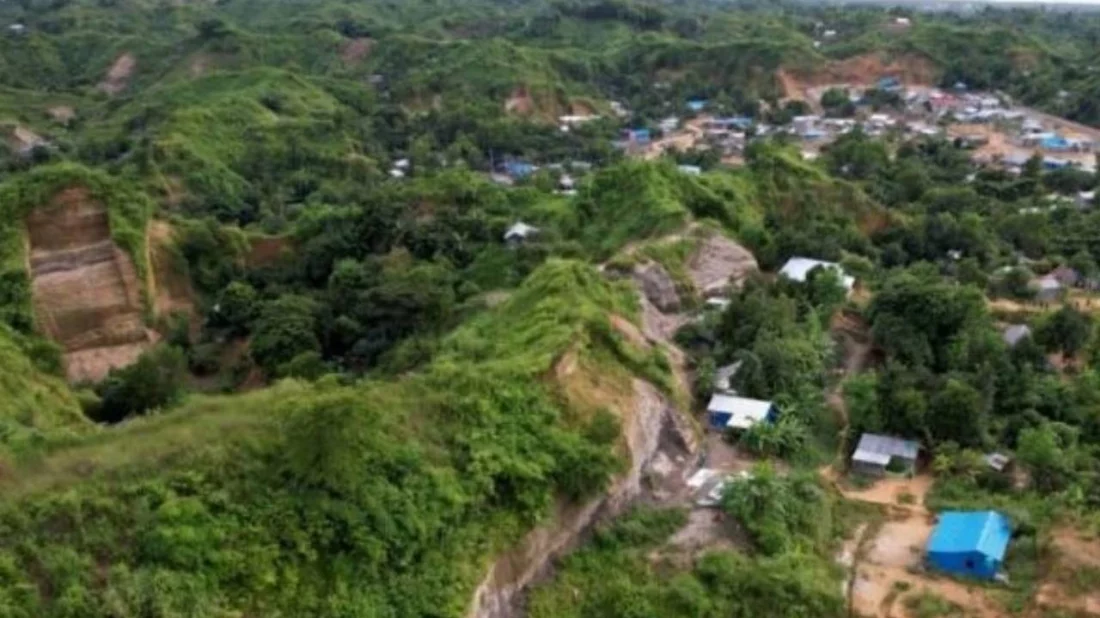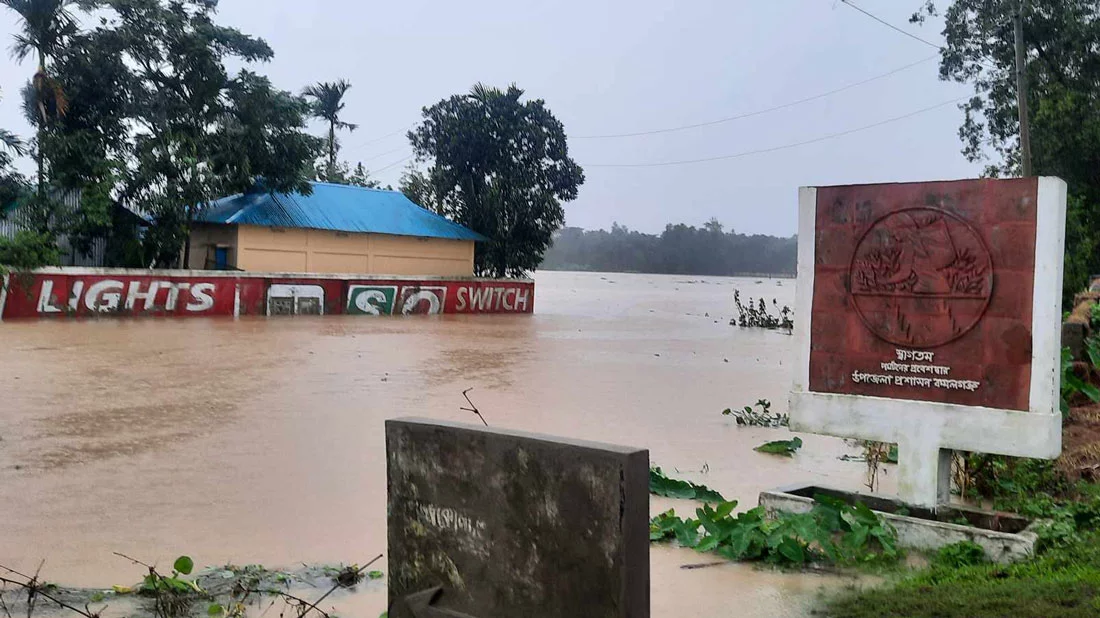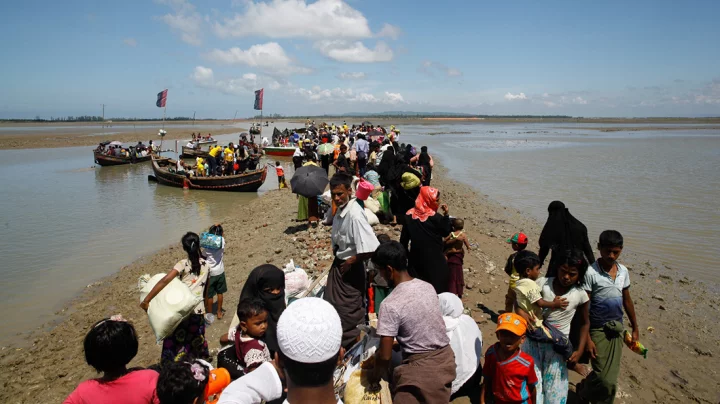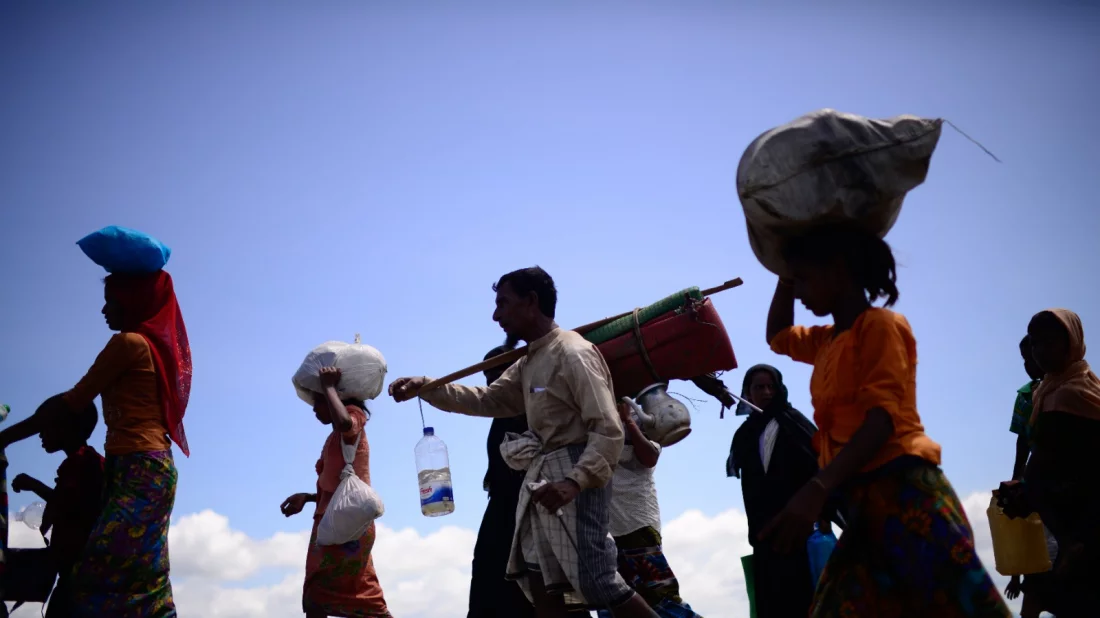
The Meteorological Department has warned of the risk of landslides in Chittagong due to continuous heavy rainfall.
Despite repeated reminders from the district administration and city corporation officials, residents living at the foot of the hills have not been relocated.
According to the district administration's last year's data, 6,558 families live in risky conditions across 26 hills.
However, this number is outdated as no new survey has been conducted this year. Environmentalists and district officials believe that the number of risky settlements on the hills has increased over the past year.
Current situation
Sources from the district administration's office indicate that Chattogram currently has 26 hills, with 16 owned by various government agencies and 10 privately owned.
A total of 6,558 families reside on these hills, all living under significant risk. Even during heavy rain, they do not leave their settlements.
Implementation of recommendations
Following the deadly landslide on June 11, 2007, which killed 127 people, the Hill Management Committee was formed. This committee made 36 recommendations, including urgent afforestation, construction of guide walls and drains, sustainable settlement practices, and strict measures against illegal hill cutting.
However, in 17 years, none of these recommendations have been implemented.
Rather it is only when landslides occur before or after the monsoon each year that the authorities are alerted.
Despite the recommendation not to allow housing projects within five kilometers of the hills, many real estate companies have developed housing projects by cutting hills.
Among them, several companies, including Epic and Sanmar, have been fined by the Department of Environment.
Even after that, the construction has not stopped. These companies continue to cut hills and construct buildings.
Hill cutting for residential areas
Environmental scientist Prof Dr Idris Ali said: "Despite continuous rain over the past few days, there has been no landslide, which is a good sign. In Chittagong, landslides occur even with less than 100 millimeters of rain. Perhaps due to the administration's alertness in relocating those living in risky areas, no deaths have occurred.”
Saying that hill cutting has been continuing non-stop, the environmentalist said: “Hills are being cut throughout the year. Residential areas have been developed by cutting hills in places like Bayezid and other areas. The CDA (Chittagong Development Authority) is approving these buildings. No one is questioning how or on what grounds the CDA is approving buildings on hills and government canals.
“No action is being taken against those who are giving these approvals. Those who are cutting hills and making plots are being fined Tk5-6 lakh, yet they are selling these plots for Tk50 to 60 lakh. Even after paying a fine of Tk5 lakh, they still make a profit of Tk55 lakh," he added.
Dr Idris stressed the need for annual surveys to monitor the number of hills and the extent of hill cutting in Chittagong. Such surveys would provide updated data crucial for effective management.
Risk of casualties
According to Md Aliur Rahman, general secretary of the Chittagong River and Canal Protection Movement, more than seven thousand families are living on the hills.
He said: "Among them, over six hundred families are living in extremely risky conditions. If there is continuous rain, a landslide could occur at any time, resulting in many casualties. Not just in the city, but also in Sitakunda's Salimpur Jungle, more than three thousand families are living in risky conditions. The district administration should relocate them elsewhere."
Recently, the Bangladesh Environmental Lawyers Association (Bela) held a seminar on hill cutting and landslides in Chittagong.
The keynote was presented by Prof Dr Kamal Hossain, former chairman of the Institute of Forestry and Environmental Sciences at Chittagong University.
The seminar revealed that there used to be 200 small and large hills in the city. Already, 120 of these have disappeared.
In 1976, there were 32.37 square kilometers of hills in the five police station areas of the city (Bayezid, Khulshi, Panchlaish, Kotwali, and Pahartali).
By 2008, this had reduced to 14.2 square kilometers. Over the past 32 years, 18.344 square kilometers of hills have been wiped out, which is nearly 57% of the total hills.
Landslide fatality statistics
According to the district administration's statistics, 248 people have died in landslides in Chittagong over the 17 years from 2007 to 2024.
On June 11, 2007, a catastrophic landslide killed 127 people, including 11 in the Matijhorna area of Lalkhan Bazar Ward.
Additionally, 12 people died in 2008, 17 in 2011, 24 in 2012, two in 2013, five in 2015, four in 2022, and two in 2023.
Utility connections in risky settlements
It has been found that electric poles have been installed in the risky hills of the city, providing connections. In some places, there are also gas and water lines.
Despite the representatives of the service organizations announcing at each meeting of the hill management committee that these electricity, water, and gas connections will be disconnected, this is not implemented in reality.
When asked how electricity poles, gas, and water lines are reaching the risky hills, Salauddin Mohammad Reza, a member of the hill management committee, said: "These connections have been managed through the Department of Environment, gas, electricity, and water organizations. If these four organizations were strict, illegal encroachment would be stopped. If it is stopped, the damage from landslides will be reduced, and fatalities from landslides will be prevented."
What authorities say
Deputy Commissioner Abul Bashar Mohammad Fakhruzzaman said that eviction operations are conducted as soon as illegal settlements are identified.
However, these settlements often reappear. The administration is committed to continuing evictions to ensure the safety of the residents.











